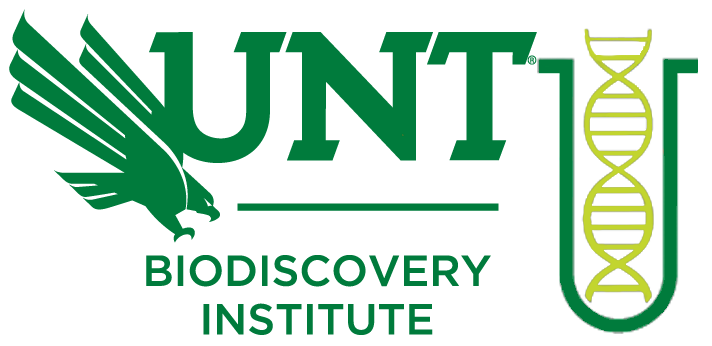"The Mechanistic Determinants of Catalytic Bias in Cofactor-Based Enzymatic Oxidation-Reduction Reactions"
Event/Seminars
BioDiscovery Institute Seminar Series Fall 2025
Monday at Noon in LIFE A419
Date |
Topic |
Speaker |
|
8 Sept 2025 |
BDI Admin Update |
Sam Cahill, Martha Frantz, Crystal Garrett-McEwen, & Shelley Schaffer |
|
15 Sept 2025 |
BDI Summer Research Assistants |
Swapna Bodampati |
| 22 Sept 2025 | BDI Summer Research Assistants |
Brandon Deeb |
| 29 Sept 2025 | BDI Summer Research Assistants |
Daniel Grinffiel |
| 6 Oct 2025 |
BDI Travel Award Winner |
Spencer Lee |
| 13 Oct 2025 |
BDI Travel Award Winners |
Jesseca Hemminger |
| 20 Oct 2025 | BDI Travel Award Winners |
Abdul Rawoof |
| 27 Oct 2025 |
BDI Summer Research Assistant |
Neha Goud Baddam |
| 3 Nov 2025 |
10x Genomics |
Matt Alfaro |
| 10 Nov 2025 |
|
Roisin McGarry |
| 17 Nov 2025 |
Lab Safety |
Veena Naik, Biosafety Officer |
BDI Distinguished Speaker Series

 |
John W. Peters received his PhD from Virginia Tech in 1995 and was an NIH Ruth Kirschstein Postdoctoral Fellowship recipient at Caltech. He is currently Presidential Professor and Chair of the Department of Chemistry and Biochemistry at the University of Oklahoma. His research predominantly focuses on biological electron transfer as it relates to energy and human health, and he has published more than 200 research articles. He is an elected fellow of the American Association for the Advancement of Science and the American Academy of Microbiology and a recipient of the Cozzarelli Prize from the Proceedings of the National Academy of Sciences and the Horizon Prize from the Royal Society of Chemistry. |
Chemistry Seminar - Thursday, September 11 @ 3:30pm (ESSC 255)Biology Seminar - Friday, September 12 @ 3pm (ESSC 255)"The Parameters that Define Flavin-Based Electron Bifurcation" |
|
 |
|
Thursday, October 23, 4:45pm, ESSC 255BioFrontiers Seminar Series: Friday, October 24, 3pm, ESSC 255 |
|
2024 (Fall) Amy Rosenzweig
2024 (Spring) Sarah O'Connor
University Research Day
Hello Student Research Community:
The Division of Research and Innovation will host its third annual University Research
Day on October 2, 2025. We look forward to recognizing high-impact, innovative, and educational research
by students and faculty on campus. This year, we will accept abstracts starting Tuesday, April 1, 2025, for our annual poster session. Join our early bird call to save your spot in our poster celebration.
Submit Today!
Key Dates:
- Abstracts can be submitted starting April 1, 2025.
- Deadline to submit abstracts is Friday, May 30, 2025.
- Applicants notified of selection on Friday, June 20, 2025.
Open to faculty, staff, and students, this one-day celebration offers a unique opportunity
to engage in interactive panel sessions, explore the faculty and student poster showcase,
and attend an exciting research celebration event.
To learn more about the submission process and requirements, please visit our InfoReady site. The deadline for submitting your abstracts is Friday, May 30, 2025.
University Calendar Events
